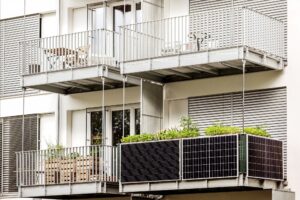Air Quality News talks to Abigail Nastan to find out how NASA is advancing our understanding of air pollution monitoring through satellite data.
Abigail is Deputy Programme Applications Lead for the ongoing Multi-Angle Imager for Aerosols (MAIA) mission which is due to launch in 2024 and will seek to understand how different types of air pollutants affect human health.
‘My job is to serve as an interface between the people building MAIA and the people who we are producing the data for,’ explains Abigail.
‘It is my role to understand how people want to use the data, what their needs are, and what they will require to be able to use the data successfully in their work.
‘However, the problem with MAIA is that when the satellite does launch the project is relatively short-term, it’s really meant as a pathfinder for a future air quality system that is more formal.’
Another problem with any ongoing or future satellite air quality mission is that they are only able to measure pollutants in the atmosphere.
‘The existing satellites measure properties on the total column of the atmosphere,’ explains Abigail.
‘That basically means from the edge of space down to the surface, so that means you have to do additional work to understand how much of that air pollution is at ground-level where people are actually exposed to it. We might detect air pollution in the atmosphere but that doesn’t mean it’s directly relevant to people’s health.’
In a bid to tackle these two joint issues, Abigail and her team have received funding from NASA to launch a new crowdsourcing competition to create a new way to predict ground-based air pollution levels using satellite data.
‘We are asking participants to design an algorithm that can predict either particulate matter (PM2.5) or nitrogen dioxide (NO2) pollution in two out of three of our challenge areas, which are Los Angeles, Delhi, and Tapei.
‘Participants are required to use at least one data set from our NASA approved list but then they can construct the model in whatever way they see fit. We expect to see a lot of machine-learning models but there are also statistical model types that people can use.
‘Participants are also required to be willing to share their model because the purpose of this competition is to advance the field in terms of how well prediction models work for predicting specific air pollutants.
‘Each competition entry will be compared to data from ground-level air pollution monitors and the winners will receive a share of $50,000.’
It is hoped that if successful, the winning model could be used to predict air pollution levels on the ground and then distribute the data to the general public through an app or a website. According to Abigail, this could be ‘revolutionary’ in advancing our understanding and awareness of air pollution.
The primary alternative to satellite-based monitoring is ground-level monitoring, which although provides accurate data it has limitations in terms of where the data is collected and the spatial coverage.
‘Even in the U.S, where we enjoy a very dense network of ground-based monitors compared to many other regions in the world there are still plenty of areas where people live very far away from the closest monitor,’ explains Abigail.
‘This means that they’re not getting accurate data in terms of the air pollution in their local area.
‘This is where satellites come in, satellites are looking from space and so they can provide data where ground monitors do not exist, even in the U.S this is important but it’s incredibly important for other areas of the world where ground-level monitors are few and far between.
‘There is also a cost-benefit because even though one satellite mission can cost upwards of $100million, a single ground-based monitor can cost around $50,000. That’s not a huge amount of money for a Government Agency, but if you start multiplying that by 100 or 1,000’s of monitors, then you’re talking about a lot of money.’
The key to advancing our understanding of air pollution is understanding how bad the air pollution is in the first place. Abigail and her team hope that this competition will be the start of an era where air pollution data is available to everyone, no matter where you live or how remote you are.
To enter the competition, click here.
In related news, late last year, Air Quality News interviewed Dr. Ben Veihelmann, an atmospheric scientist at the European Space Agency (ESA).

















Good news